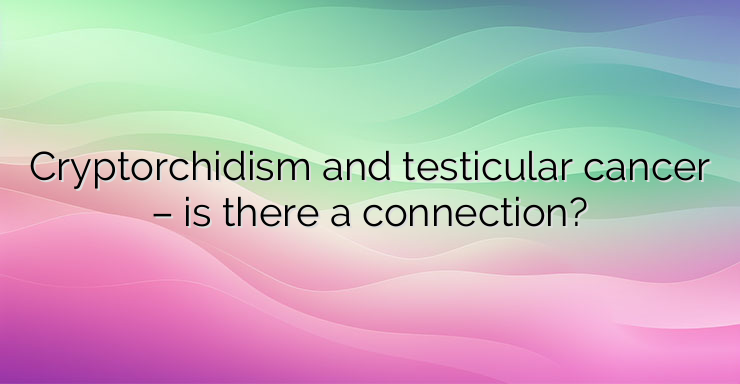The testicles are paired organs and are located in a pouch (scrotum) under the penis. The testicles are where sperm and the male sex hormone testosterone are produced. The scrotum keeps the testicles in a cooler environment because sperm cannot develop at body temperature. The longer the temperature around the testicles is higher, the lower the chances of producing normally functioning sperm. This can be a cause of infertility, especially when both testicles are affected. Normally, the testicles form early during intrauterine development in the lower abdomen and descend into the scrotum towards the end of pregnancy. Cryptorchidism is a condition in which the testicle has failed to descend into its normal place in the scrotum. This problem occurs in about 3 or 4 out of 100 newborns (and up to 21 out of 100 premature babies). Fortunately, in half of these cases the testicles will descend to their normal place on their own within the first 3 months of life. In patients with cryptorchidism, the risk of developing a germ cell tumor increases four to eight times. Surgical placement of the undescended testicle in the scrotum (orchidopexy) when the patient is under 6 years of age further reduces the risk. Experts in the US recommend that orchidopexy be done soon after a child’s first year for fertility-related reasons. In Sweden, from 1965 to 2000, a total of 16,983 men underwent orchidopexy and 56 cases of testicular cancer were reported. The risk of testicular cancer may be slightly higher for men whose testicles remain in the abdomen, as opposed to those whose testicles have at least partially descended. If cancer develops, it is usually in the undescended testicle, but about 1 in 4 cases occur in the normally descended testicle. Because of this, some doctors have concluded that there is something else that causes testicular cancer, also abnormal positioning of one or both testicles. Testicular cancer can occur at any age, but is most common between the ages of 15 and 35. In 50% of cases it occurs in men aged 20-34 years. The disease has a secondary peak in incidence after age 60. In patients with localized disease, a painful swelling or lump in one testicle is the most common symptom of the disease. A dull ache or heavy feeling in the lower abdomen can also be a present symptom. Manifestations of lymphatic or hematogenous spread may occur in patients with disseminated (spread) disease. Testicular cancer is a curable disease even in patients with metastases at diagnosis. According to SEER data from 2009-2015, the overall 5-year survival rate was 95.2%. The prognosis varies to some extent depending on the histological type of the tumor, the stage and other characteristics such as tumor marker levels and the presence of distant metastases.


Leave a Reply